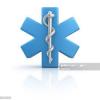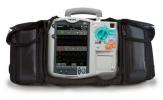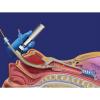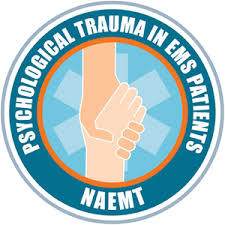Just-Cause Volunteer Services, Inc. 




Just-Cause Volunteer Services, Inc.
120 Carver Loop
Bronx, NY 10475
United States
ph: 646 388-1459
alt: 917 573-2731
ARucker
Services #2:
14
First on the Scene (FOTS), developed by NAEMT and the International Association of Fire Chiefs (IAFC), provides instructors with a toolkit to teach the general public basic emergency response to life-threatening emergencies until EMS arrives on the scene. Through lesson presentations and hands-on skill stations, participants will learn how to access help in the event of a life-threatening emergency and what to do until EMS arrives.
This course covers:
- Activating the 911 system
- Hands-only CPR and AED
- Administering naloxone
- Administering epinephrine
- Responding to life-threatening bleeding
- Penetrating chest trauma
- Moving patients to safety
- Positioning injured patients
Price for this course is $160

NAEMT's Psychological Trauma in EMS Patients (PTEP) course gives EMS practitioners the resources they need to help alleviate patients’ hidden wounds – intense fear, stress and pain – during a medical emergency.
PTEP educates EMS practitioners about the biological underpinnings of psychological trauma, the short and long-term impact on the brain and body, and warning signs that a patient is experiencing extreme psychological distress. EMS practitioners are also taught strategies and techniques to alleviate patients’ distress and help patients cope with what they’re experiencing to ward off lingering effects.
The 8-hour classroom course features scenario-based interactive sessions and lectures. Topics covered include:
The invisible wounds of psychological trauma
Reducing psychological traumatic stress
Understanding the physiological stress response
Applying the eSCAPe principle to patient care
Patient simulations
Recognizing psychological trauma within EMS
PTEP is designed for EMS practitioners and other prehospital providers. The course is accredited by CAPCE and recognized by NREMT. Students who successfully complete the course receive a certificate of completion, a wallet card good for 4 years, and 8 hours of CAPCE credit.
Price for this course is $160

EMS Safety covers safety in emergency vehicles, at the operational scene and while handling patients, as well as patient, practitioner and bystander safety and personal health.
The course offers an overview of current issues surrounding safety in EMS, presents and discusses case studies, builds risk assessment and decisionmaking skills and provides an opportunity for participants to relate their own experiences with EMS safety issues.
EMS Safety is for all EMS practitioners, other medical professionals providing prehospital patient care, EMS supervisors and administrators concerned with safety. Students who take EMS Safety will learn to: n Identify key elements in the safe operation of an ambulance.
Describe techniques for moving and securing patients safely. Recognize situations where the EMS practitioner may be at risk of violence, and how such situations may be either avoided or addressed. n Appreciate the importance of maintaining good personal health, and the impact of EMS service on practitioners’ personal health.
Address safety elements in a variety of operational situations. The EMS Safety curriculum The course charges students to become leaders in creating a culture of safety within EMS and identifies steps they can take to be a part of the process. The curriculum covers the following: n Crew resource management — Adapts airline industry concept of a “sterile cockpit” to ambulance cab and patient compartments, stressing clear communications and situational awareness.
Emergency vehicle safety — Reviews principles of defensive driving, ambulance design dangers, use of warning lights and sirens, common driving distractions, risk mitigation techniques, and the importance of securing patients, equipment and personnel. n Responsibilities in scene operations — Addresses roadside safety, warning device use, apparatus, lighting, and high-visibility clothing, and interagency planning and cooperation, giving students the opportunity to describe how they would protect the scene in a series of simulated incidents.
Patient handling — Covers body mechanics and safe moving of patients using proper lifting techniques and mechanical and other transfer aids, strategies to avoid common back injuries, the “EGGS” methodology, proper evaluation, planning and preparation for patients and the environment, and equipment selection and use.
Patient, practitioner and bystander safety — Discusses crime scenes and dangerous facilities, commonly improvised weapons, handling of weapons found at the scene, techniques of verbal de-escalation and self defense, chemical and physical restraints, and incidents of violence. n Personal health — Outlines the importance of personal health in preventing accidents and injuries, stresses unique to EMS, caring for mental health, techniques to ensure sleep despite demanding or erratic schedules, and the importance of fitness, exercise, and proper nutrition and hydration.
Price for this course is $160

The NRP Provider Course introduces the concepts and basic skills of neonatal resuscitation. It is designed for health care professionals involved in any aspect of neonatal resuscitation, including physicians, nurses, advanced practice nurses, nurse midwives, licensed midwives, respiratory care practitioners, and other health care professionals who provide direct care during neonatal resuscitation.
Steps to achieving provider status are listed below. Review the Provider LMS How-To Guide to help you get started in the new NRP LMS and enroll in the NRP Provider Curriculum. Follow the link below to register for Provider Curriculum Part 1
https://www.healthstream.com/solution/resuscitation/nrp
Provider Curriculum, Part 1
Part 1 focuses on building a foundation of neonatal resuscitation knowledge. The learning activities in Part I include
- Self-study the Textbook of Neonatal Resuscitation, 8th Ed
- Provider Exam
- Section 1: Lessons 1-5 (25 questions)
- Section 2: Lessons 6-11 (25 questions)
- You have unlimited attempts to complete Section 1 and 2 of the exam
- eSim Cases
- Provider Exam and eSim Evaluation
Provider Curriculum, Part 2
Part 2 includes the Instructor-led Event (hands-on portion of the course). Activities include
- Register for an Instructor-led Event, which includes:
- Performance and Integrated Skills
- The Performance Skills Station provides an opportunity to practice or review technical hands-on resuscitation skills with instructor assistance.
- The Integrated Skills Station allows the instructor to facilitate more than one scenario and evaluate the learner's readiness for simulation and debriefing.
- Simulation and Debriefing
- Simulation and debriefing provides a safe setting in which to integrate cognitive and technical skills, and focus on team communication and patient safety. The instructor will not coach, assist, or interrupt during a scenario.
- Complete the Instructor-led Event Evaluation
You must register for an NRP 7th edition Instructor-led Event before attending the event. You can either register yourself for events or you can be registered by an instructor or administrator.
Once you complete all steps, the instructor will approve your skills and you will be required to complete a course evaluation. Your eCard will not be generated until the evaluation is completed. You will then have access to your NRP Provider eCard on the Resuscitation Cards page under your Profile.
The price for this course is $350

Pediatric First Aid for Caregivers and Teachers
Second Edition:
Second Edition:
The American Academy of Pediatrics (AAP) is an organization dedicated to the health, safety, and well-being of infants, children, adolescent, and young adults. The AAP produces several pediatric first aid courses. One of these courses is Pediatric First Aid for Caregivers and Teachers (PedFACTs). This course is designed for caregivers, teachers, and others who care for children.
The PedFACTs course focuses on what to do if a child in your care suddenly becomes ill or gets injured. After completing the course caregivers, teachers, and others will be better able to:
Apply the 4Cs of Pediatric First Aid to medical situations
Recognize an ill or injured child
Identify specific types of medical problems and give appropriate first aid care
Know when to call emergency medical services (EMS)
Know how to perform cardiopulmonary resuscitation (CPR)
Understand what an automated external defibrillator (AED) does and how to use one
Know what to do when a child is choking
Give rescue medication for a breathing problem
Use an epinephrine auto-injector for a severe allergic reaction
The price for this course is $65
Just-Cause Volunteer Services, Inc.
120 Carver Loop
Bronx, NY 10475
United States
ph: 646 388-1459
alt: 917 573-2731
ARucker
